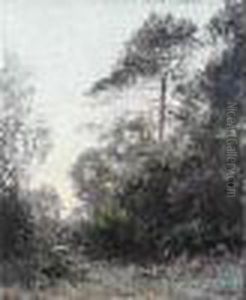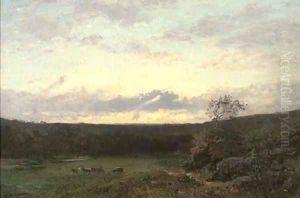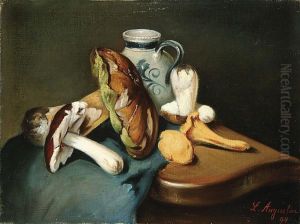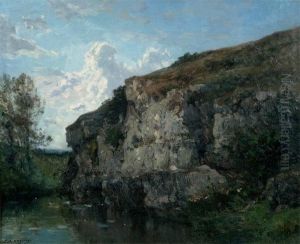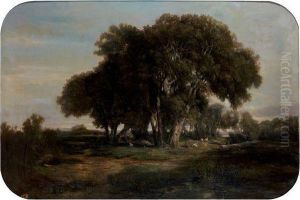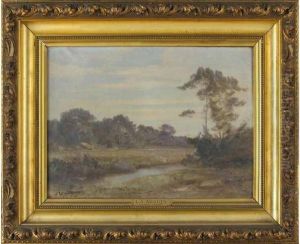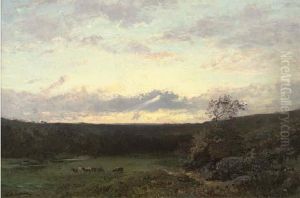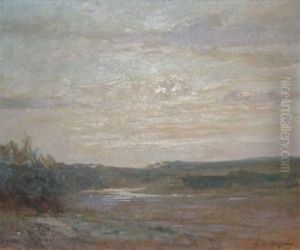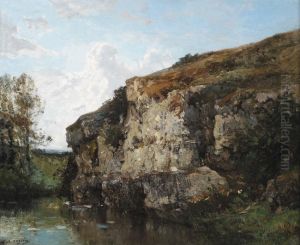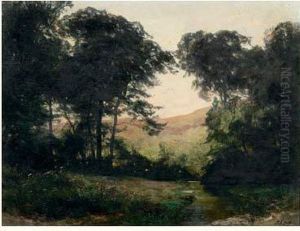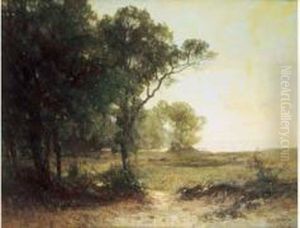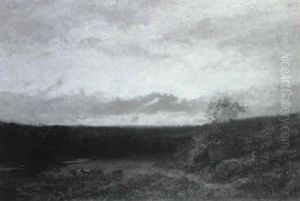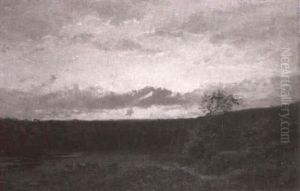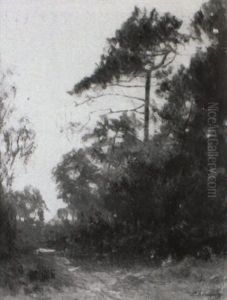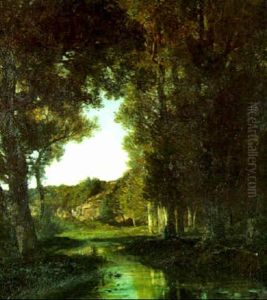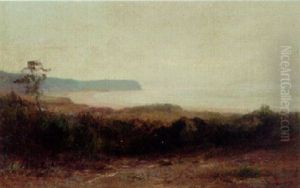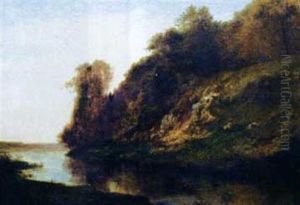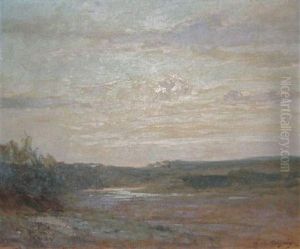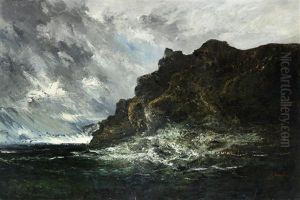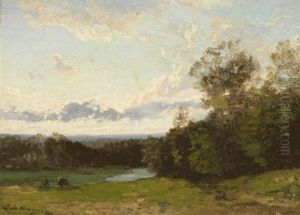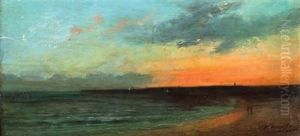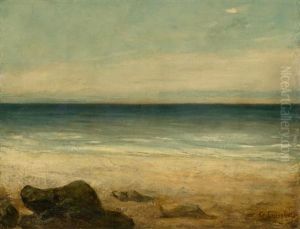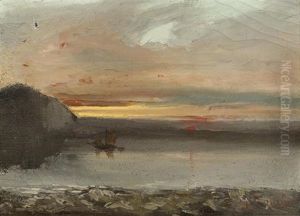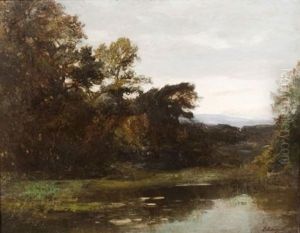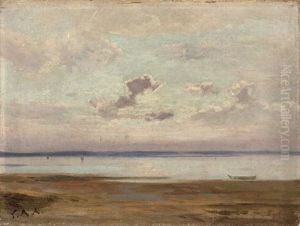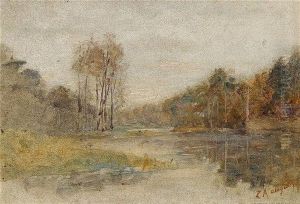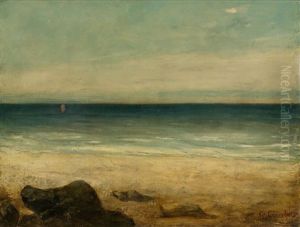Louis-Auguste Auguin Paintings
Louis-Auguste Auguin was a French landscape painter, born in 1824 in Saint-Palais-sur-Mer, France. He is less widely known compared to his contemporaries, but his work provides a fascinating insight into the 19th-century French landscape painting tradition. Auguin was a pupil of the famous French painter Jean-Baptiste-Camille Corot, and his influence is evident in Auguin's delicate treatment of light and color. Throughout his career, Auguin was dedicated to capturing the serene beauty of the French countryside, the Atlantic coast, and occasionally scenes from his travels.
Auguin's artistic journey was deeply influenced by the Barbizon School, a movement that emphasized painting nature in its own surroundings and was a precursor to Impressionism. Though Auguin did not gain the same level of fame as some of his contemporaries, his works were appreciated for their quiet beauty and meticulous attention to the nuances of natural light and atmosphere. He exhibited at the Paris Salon, an annual art exhibition held in Paris, which was the official art exhibition of the Académie des Beaux-Arts in Paris, and his works were relatively well received.
In addition to landscapes, Auguin occasionally painted marine scenes, capturing the mood and movement of the sea with a sensitivity that matched his treatment of landscapes. His approach to painting was traditional, focusing on careful composition and the subtle interplay of light and shadow, which gave his works a timeless quality.
Despite his artistic skills and contributions to the landscape genre, Louis-Auguste Auguin remains a somewhat obscure figure in art history. He passed away in 1903, leaving behind a body of work that continues to be studied and appreciated by those interested in the evolution of landscape painting in France during the 19th century. Auguin's works are held in various private collections and museums, offering a window into the tranquil and evocative landscapes that captured his imagination.
